News
Scotland Underwater

The first in a series of blogs about Scotland Underwater from Ross Mclaren…
Here in Scotland our driech and dreary weather is world famous. But actually, the copious amount of rain that we often moan about, is responsible for a cacophony of colours across our beautiful country.
The one place that might not always be as renowned for being vibrant and colourful is our seas and lochs.
As always there’s exceptions. Our beaches on the north west coast are covered in golden white sand and with turquoise water that might be mistaken for the Maldives… albeit a wee bit nippier… and we’ve even got a few wee lochs (called Lochans) with some pretty green shades to them, but for a good percentage of our coast and lochs, it’s a steely grey mass that greet us.
So, you’d be forgiven for thinking that Scotland’s underwater world mirrors the water it lies beneath. Now, I’m not going to pretend you’re going to be met with a rainbow of colours found somewhere like the Great Barrier Reef, but actually the vibrancy found under the waves definitely took me by surprise.
Disclaimer! I’m no expert in marine biology or underwater photography! I’m pretty much a guy with “all the gear and no idea!” I started out with a wee GoPro and built my camera “rig” up to something that’s now resembling an octopus. But, I’ll be completely honest, I have no real clue what I’m doing in terms of settings, etc. It gets put on “Auto”, I turn the lights on, try not to disturb the marine life and press the button hoping for the best. Quite simply, I’ve fallen in love with our underwater world and do my best to try do it some justice through my photos.
One of the most beautiful marine species I find photographing, and to be honest probably one of the easiest, is the anemones. We have such an abundance of these from deadmens fingers, to firework anemones, and the colours that can be found are just breathtaking. The patterns and shapes they make as they glint in the light of the torches and with the movement of the water is magical.
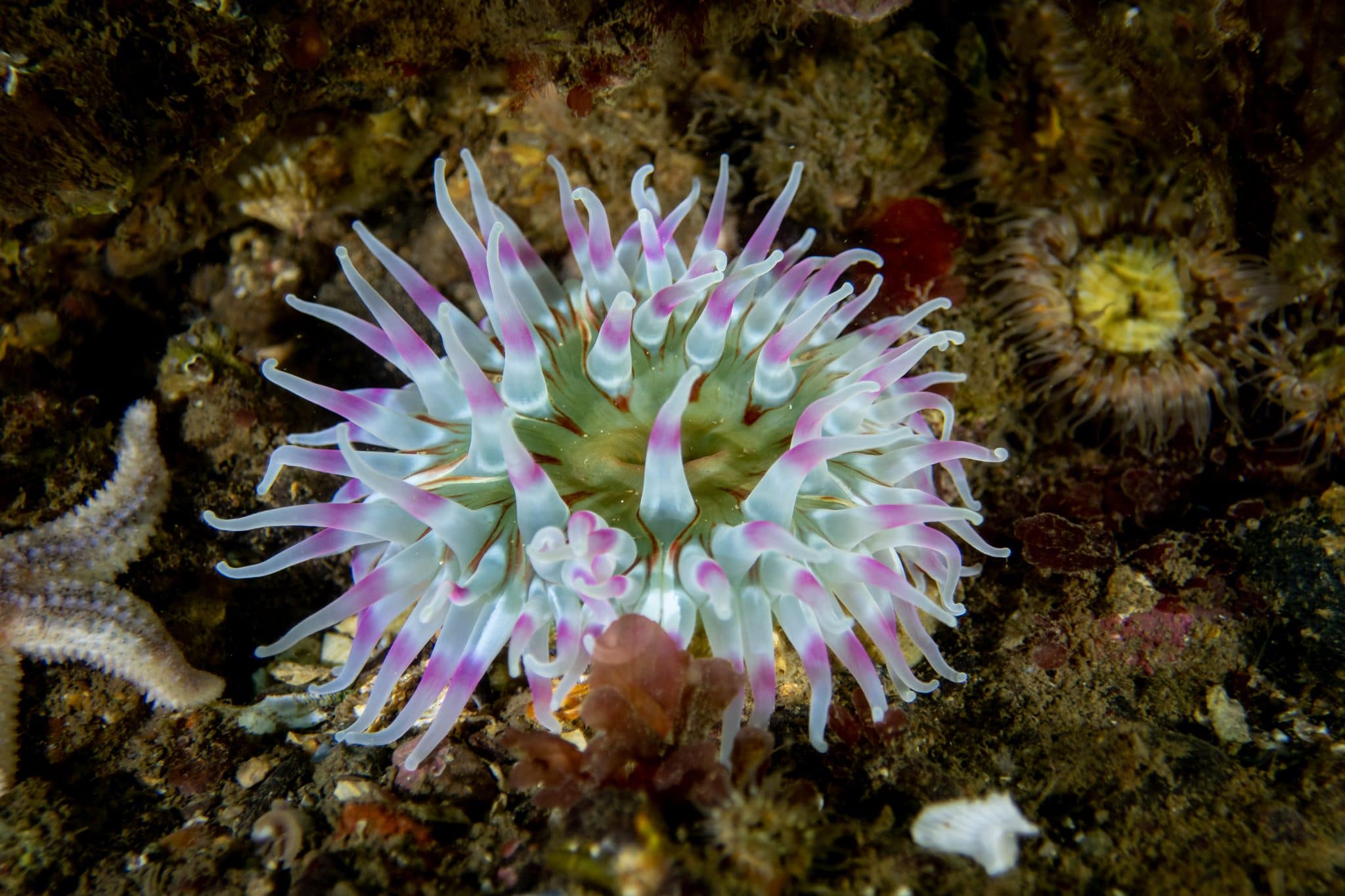
They might not be the most exciting sea creatures but the humble crab is also a fantastic specimen to capture, and again we have a wide variety. I’m not quite sure what it is but you can almost see/feel the attitude oozing out of them when you catch them in the beam of the lights.
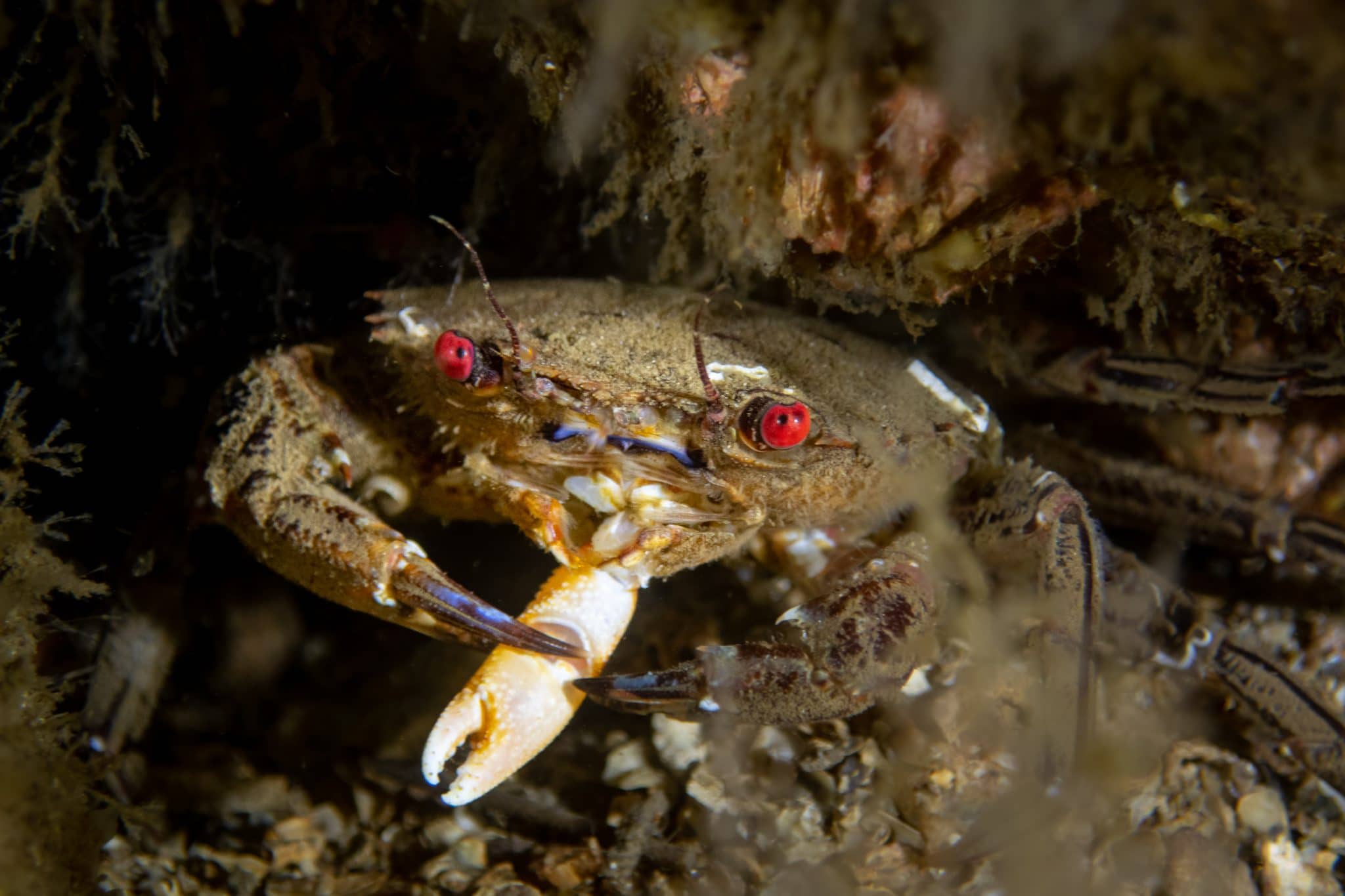
I say this to almost anyone who’ll listen, but I always said I would absolutely love to get sweeping wide angle photo of a wreck. Those are by far my favourite photos to look at. Seeing these hulking feats of human engineering being reclaimed by nature and appreciating the scale of them in one scene is awe-inspiring. Sadly in Scotland with our visibility (well certainly in the areas I frequently dive) it’s not really possible and when it is, it really doesn’t do it justice. However on the flip side Macro photography here is definitely rewarding!
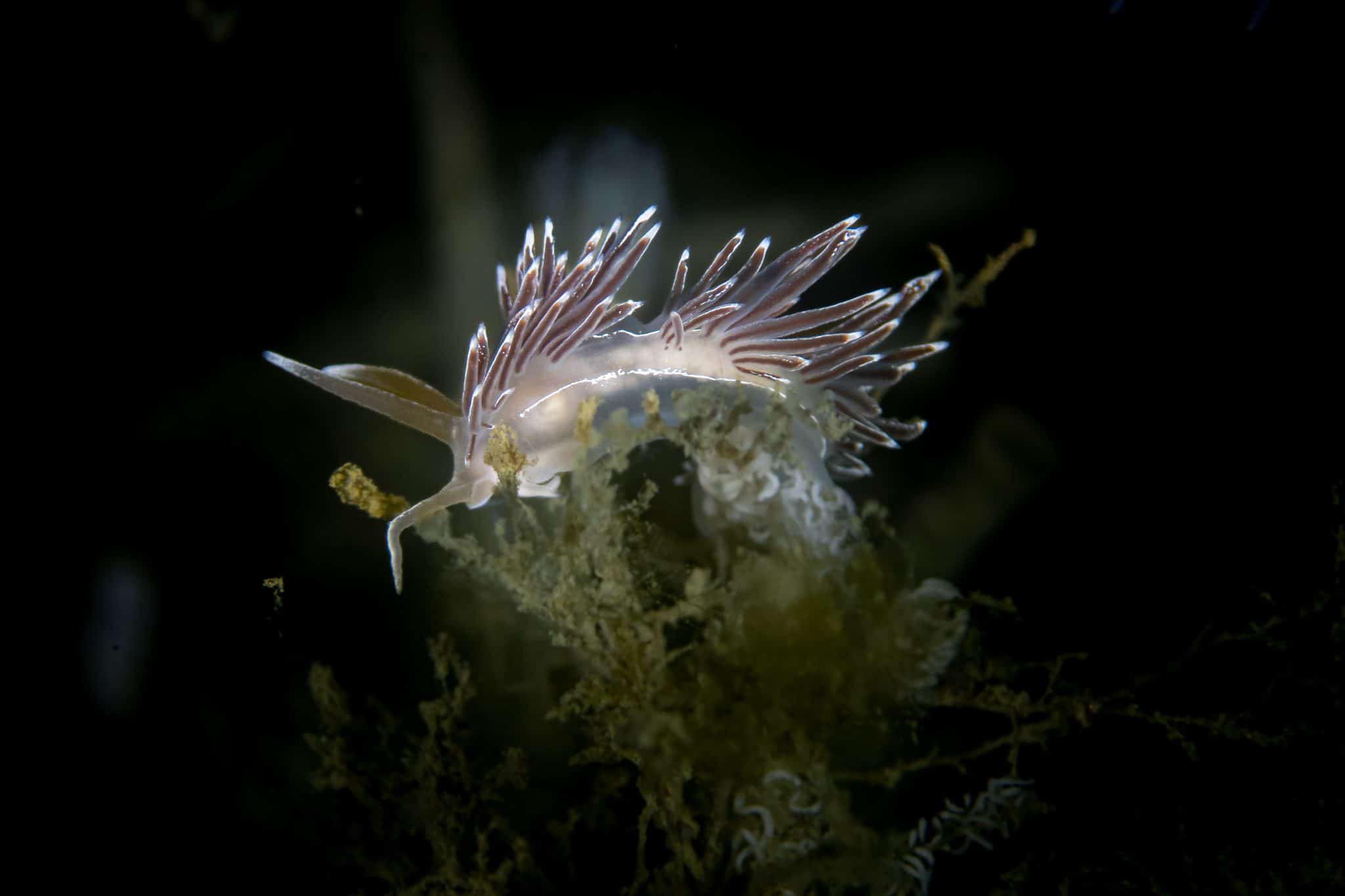
Last summer I had one “photographic goal”… get a nudi! I was desperate to capture a wee sea slug, but no matter how hard I looked I could only find one all year and when I did my GoPro just didn’t do it justice. This year though, well it seems to be a completely different story! Every dive we seem to come across at least one… it also helps when you’ve an eagle eyed dive buddy! With the new camera and macro lens the quality in photos has improved as well. It’s not just the number we’ve seen but the variety we’ve spotted as well! There are so many different kinds, different colours and shapes. It can be a wee bit frustrating trying to hold myself still in the water and getting the camera to focus in on this tiny wee creature, but it’s so worth it!
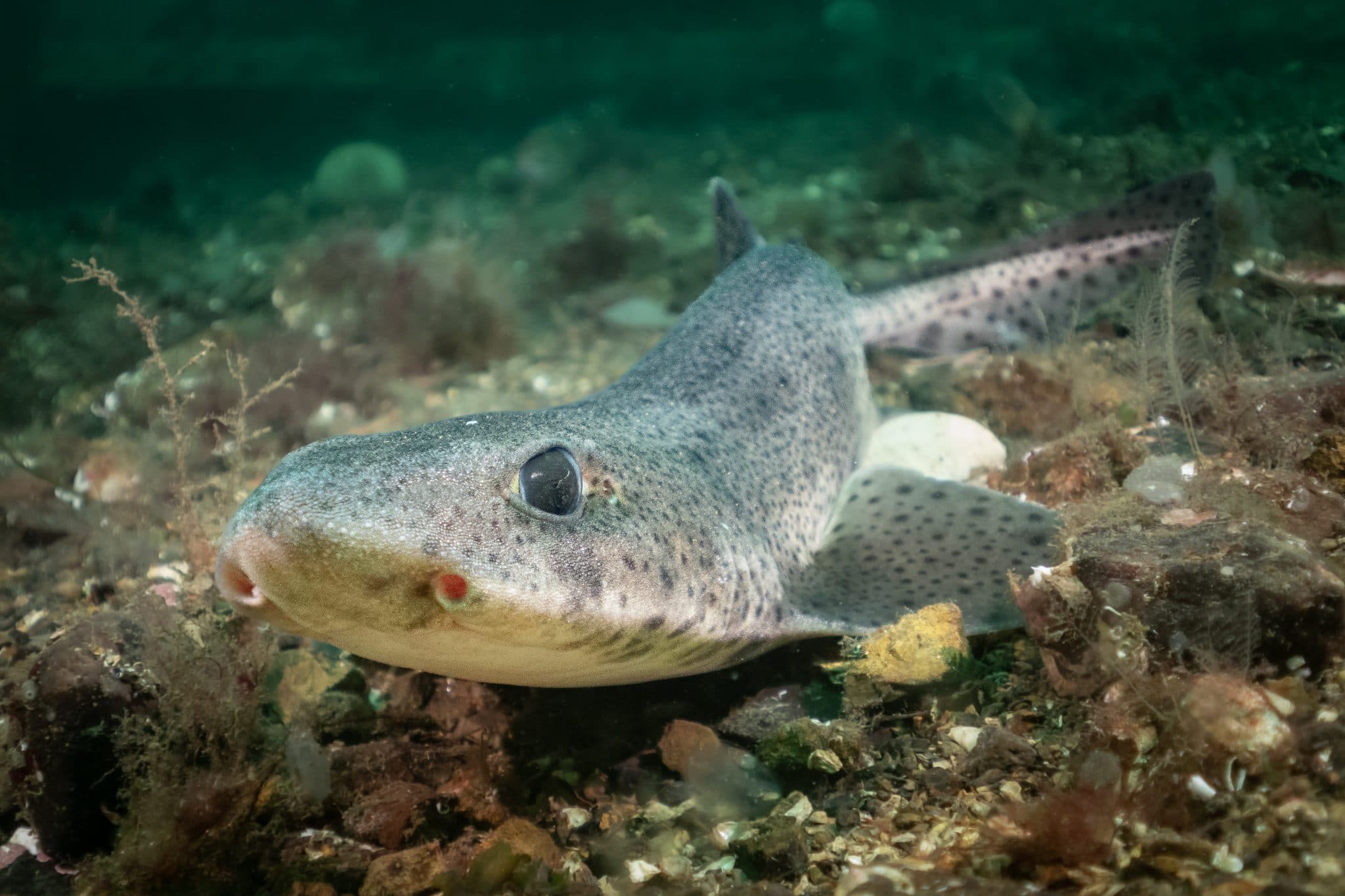
The dogfish/catshark isn’t particularly uncommon in the UK and it’s no different up here in Scotland, if you know where and when to look. They are absolutely stunning to photograph and, although not overly colourful, the texture of their “skin” and their eyes is absolutely incredible.
Now cucumbers are most definitely not my favourite vegetable… but sea cucumbers… those I do love! I genuinely can’t get over how cool they look. They remind me of wee trees and I’m totally mesmerised watching them bring the food to their mouths with their tentacles.

Jellyfish! The scourge of beach goers everywhere! The dread of someone shouting “JELLYFISH” and hoping beyond hope you aren’t caught in a tentacle brings back childhood memories. So until I started diving the “evil” jellyfish was much feared. However, since I started exploring the underwater world and seeing them in all their glory, I have come to appreciate jellyfish for they unbelievable beauty and grace. I love watching them float past (from a distance!) and seeing the shapes they take in the water. They are so full of grace!
Even the most dived sites can throw up a wee surprise every now and again. We’d headed to one our usual haunts with the main goal of logging a couple of deeper dives just to build up to Scapa later in the year. We descended down to around 38m where we planned to swim along for a wee bit before ascending again. There were a few rocks, but generally not much life but I took the camera anyway, you know, just in case.
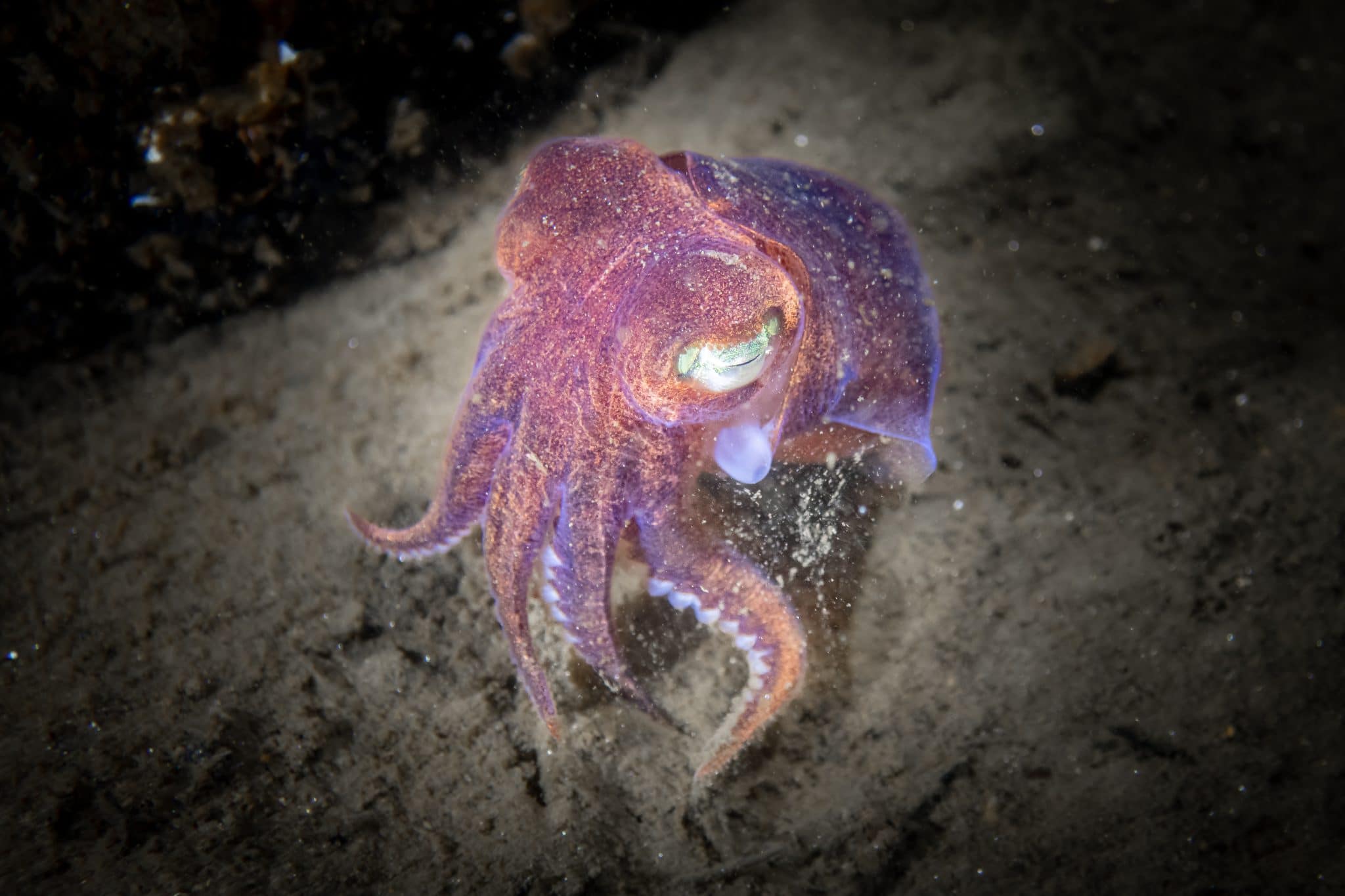
Now these guys aren’t completely uncommon here on the west coast, but they’re mainly found at night and until now I’d never spied one, let alone photographed one! Bobtail Squid/Little Cuttlefish! I’m not going to lie, I was so excited! I actually thought I was slightly narked as it appeared out of the sand. This wee fella was so cool! The colours were absolutely breathtaking and getting the opportunity to photograph them was just amazing.
Scotland isn’t the diving capital of the world; we’re not going to suddenly become a top dive destination on many diver’s bucket lists. BUT we do have some incredible marine life, with such unbelievable colours! Although it’s not the easiest diving you’ll ever do, when you do get that moment it makes it feel all the more special.
For more from Ross, follow him on Instagram @underwater.ross and on Twitter @outdoorsross.
News
Book Review: Fire on Monroe Bravo by Fred Lockwood

Fire on Monroe Bravo is the latest book in the Jack Collier series by Fred Lockwood. Our story begins with our lead characters, Jack and Sandro, owners of Marine Salvage & Investigation Company, arriving on the Monroe Bravo Oil & Gas Platform in the North Sea. Having secured a contract for their vessel the MV Stavanger to act as support ship to the platform for TransGlobal Oil, our protagonists are on a celebratory visit.
However almost as soon as they arrive a series of explosions rock the platform, causing huge damage, loss of life and the very real danger of a massive human, ecological and financial disaster.

As the danger mounts for both our heroes and the surviving workers, Jack and Sandro will have to escape the inferno, all while trying to save the platform and the men still trapped unable to help themselves.
The disaster sets the scene for the unfolding story lines following the fate of the platform and our main characters, the police investigation into a suspected terrorist act and the actions of TransGlobal Oil as they attempt to navigate the pubic outcry and financial repercussions.
In his eighth book, Fire on Monroe Bravo, Fred Lockwood delivers an explosive thriller, with plenty of above and in-water drama, and our heroes fighting for survival, what more can you ask for?
We thoroughly recommend this read and look forward to the next in the series. For more information about his book series, you can check out the reviews of his previous books here on Scubaverse.
- Title: Fire On Monroe Bravo
- Author: Fred Lockwood
- ISBN: 979-8325324536
Available in a paperback version and for Kindle from Amazon and book stores.
Blogs
Alonissos: The complete diving destination (Part 1)

In June we were incredibly fortunate to be invited to dive in Alonissos, a small Greek Island in the Sporades island chain located in the North Aegean Sea. While I have long been a big fan of the Greek Islands as a great holiday destination, I had not had the opportunity to do any diving on previous visits and Mike and I were extremely excited to see what Alonissos had to offer both above and below the surface!

The Sporades are easily accessible via the airport in Skiathos (the first island in the chain), which is served by Jet2 flights from all major UK airports from May through October. Numerous ferries and charter boats make island hopping from Skiathos Town a breeze. After an hour boat ride, the picturesque port of Patitiri was a wonderful introduction to Alonissos, where we were met by our gracious hosts Kostas of Albedo Travel and Dias of Alonissos Triton Dive Center. Mike and I were delighted to be staying at the Paradise Hotel, aptly named for its stunning views over the sea and great location for walking to the waterfront.

Alonissos is beautifully situated in the National Marine Park of Alonissos and the Northern Sporades, the largest marine protected area in Europe. The surrounding seas offer fabulous marine life, including incredibly rare species such as the Mediterranean monk seal. They boast deep walls covered in gorgonians and sponges, stunning topography with caverns, swimthroughs and pinnacles, and the first accessible ancient shipwreck from 500BC!

In locations where historical sites have been reported, the waters are largely restricted, but with collaboration between government, underwater archeologists and dive centres, incredible underwater museums are being created for a truly unique diving experience. Alonissos is home to the first of these, the Ancient Shipwreck of Peristera Accessible Underwater Archeological Site. The chance to dive into history (along with reports of healthy reef life and amazing underwater topography) meant Mike and I were keen to get in the water.

Our introduction to the diving around Alonissos was at the Agios Georgios Pinnacles, in the channel between Alonissos and Skopelos. This fantastic site was named “The Chimney,’ and proved to have a huge amount to see. We got to a decent depth here (over 25m), and marvelled at a colourful reef wall with a wonderful swim through whose rocky walls were absolutely covered with life. As well as brilliant topography there was no shortage of macro life here. We saw numerous nudibranchs, five different species in total. The second dive at Mourtias reef nearby was a shallower dive along a nice wall with lots of crevices. Several moray eels and grouper called this site home. We enjoyed looking in the crevices for lobster and smaller benthic life, such as cup corals and tunicates.

Our itinerary allowed us two dives a day with afternoons left to explore the island with our hire car and evenings to enjoy the famous Greek hospitality. This proved to be a lovely mix of in-water and land based diversions.

The next days diving to the Gorgonian Gardens and Triton’s Cave was to be even better! These two stunning sites are nothing short of fabulous. The Gorgonian Gardens was a deep wall near to the Agios Georgios islands. The ever-present currents in this deep channel meant that the sea life was amazing … the namesake Gorgonian sea fans dotted the wall at a depth of 30 to 50 meters, getting ever larger the deeper we went. Above 30m was by no means less beautiful, with sponges, corals, scorpionfish, moray eels and some rare and colourful nudibranchs.

The second shallower dive of the day was to Triton’s Cave or the Cavern of Skopelos, on the east side of that island. The spectacular rock formations had wild striations both above and below the water making a truly epic topography. The cavern entrance was at 14m, and big enough for a buddy pair, winding up to 6m and passing two beautiful windows out into the blue. Emerging from the cavern, the light at the shallower depths and the incredible rock formations made for a fantastic gentle swimming safety stop and we all surfaced by the boat with massive grins.

Check out our next blog :Alonissos: The complete diving destination (Part 2)” to hear about our amazing dive on the 2500 year old Peristera Wreck!
Thanks to:
Alonissos Triton Dive Center https://bestdivingingreece.com/
Albedo Travel https://alonissosholidays.com/activities/
Paradise Hotel https://paradise-hotel.gr/
Alonissos Municipality https://alonissos.gr/en/
-

 Blogs2 months ago
Blogs2 months agoDiving With… Nico, Ocean Earth Travels, Indonesia
-

 News1 month ago
News1 month agoMurex Bangka Announce New Oceanfront Cottages & Beachfront Dining
-

 Blogs2 months ago
Blogs2 months agoA new idea in freediving from RAID
-

 Marine Life & Conservation1 month ago
Marine Life & Conservation1 month agoIceland issue millionaire whale hunter a licence to murder 128 vulnerable fin whales
-

 Marine Life & Conservation2 months ago
Marine Life & Conservation2 months agoThe Shark Trust Great Shark Snapshot is back
-

 News3 months ago
News3 months agoCharting New Waters; NovoScuba Goes Global with the Launch of their Revolutionary Dive Training Agency!
-

 Gear News1 month ago
Gear News1 month agoNew Suunto Ocean – a dive computer and GPS sports watch in one for adventures below and above the surface
-

 Marine Life & Conservation Blogs2 months ago
Marine Life & Conservation Blogs2 months agoBook Review: Plankton















